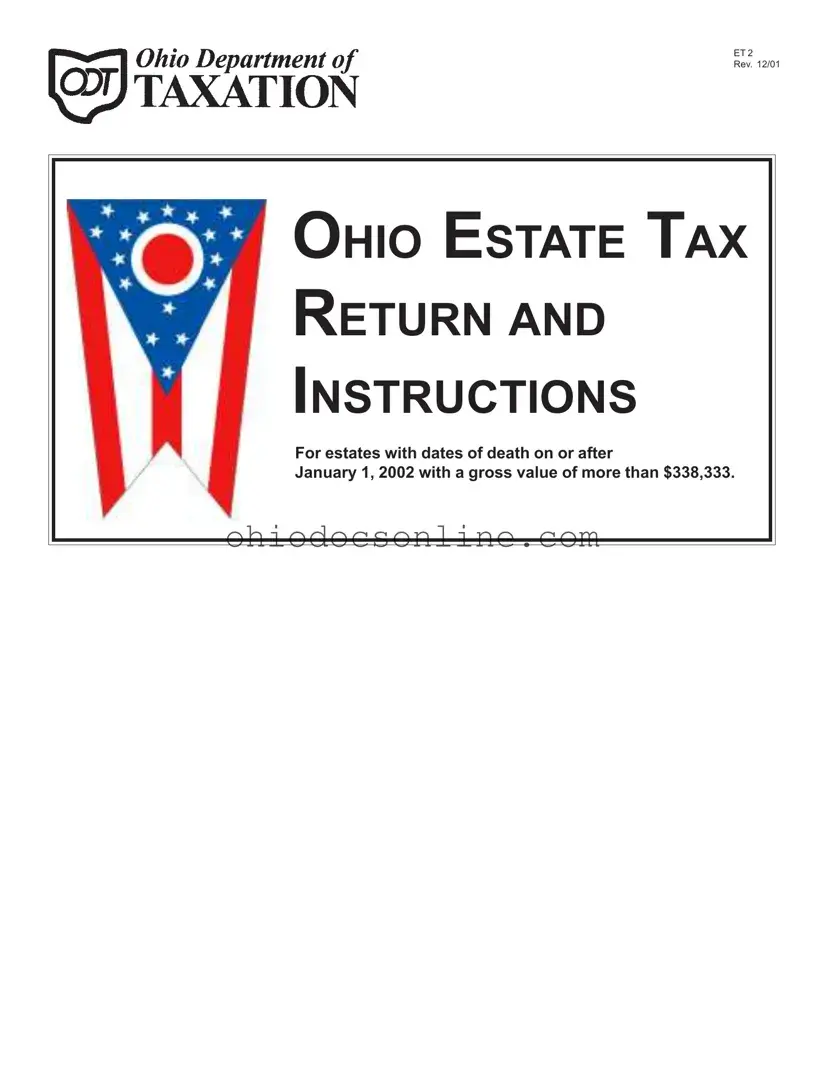Ohio Et 2 Template in PDF
The Ohio ET 2 form is the official estate tax return required for estates with dates of death on or after January 1, 2002, that have a gross value exceeding $338,333. This form is essential for reporting the estate's financial details and calculating any taxes owed. Executors and administrators must complete the form accurately to ensure compliance with Ohio tax laws.
Open Editor
